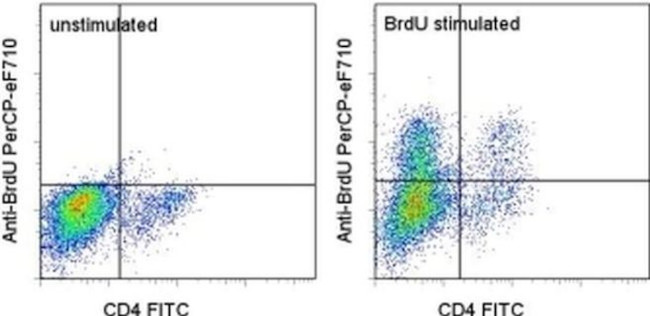Search Thermo Fisher Scientific
Invitrogen
BrdU Monoclonal Antibody (BU20A), PerCP-eFluor™ 710, eBioscience™
FIGURE: 1 / 15
BrdU Antibody (46-5071-42) in Flow

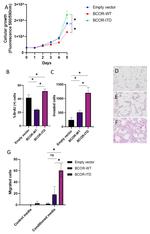
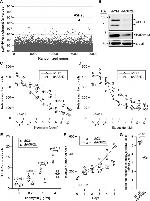


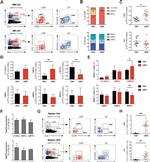
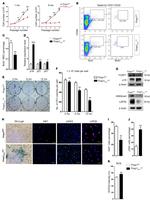
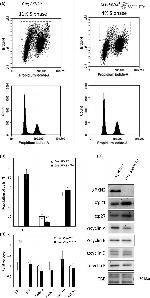
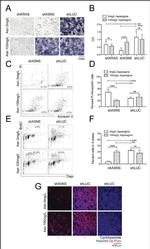
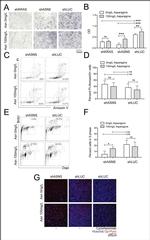
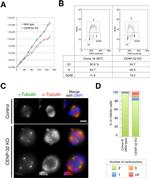
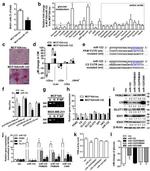
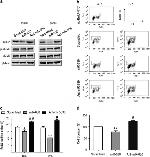

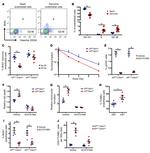
Product Details
46-5071-42
Species Reactivity
Published species
Host/Isotype
Recommended Isotype Control
Class
Type
Clone
Conjugate
Excitation/Emission Max
Form
Concentration
Purification
Storage buffer
Contains
Storage conditions
Shipping conditions
RRID
Product Specific Information
Description: This Bu20a monoclonal antibody reacts with 5-bromodeoxyuridine (BrdU). BrdU is a derivative of uridine that can be incorporated into DNA in place of thymidine during the S-phase of the cell cycle. Anti-BrdU can then be used to identify cells that have undergone DNA synthesis during BrdU treatment.
For staining for flow cytometric analysis, we recommend the use of the BrdU Staining Buffer Set (Product # 00-5525) and protocol.
Applications Reported: This BU20A antibody has been reported for use in intracellular staining followed by flow cytometric analysis.
Applications Tested: This BU20A antibody has been pre-titrated and tested by flow cytometric analysis of BrdU-pulsed mouse splenocytes using the Foxp3/Transcription Factor Buffer Set (Product # 00-5523-00) and protocol or the BrdU Staining Buffer Set (Product # 00-5525-00) and protocol. This can be used at 5 µL (0.06 µg) per test. A test is defined as the amount (µg) of antibody that will stain a cell sample in a final volume of 100 µL. Cell number should be determined empirically but can range from 10^5 to 10^8 cells/test.
PerCP-eFluor® 710 can be used in place of PE-Cy5, PE-Cy5.5 or PerCP-Cy5.5. PerCP-eFluor® 710 emits at 710 nm and is excited with the blue laser (488 nm). Please make sure that your instrument is capable of detecting this fluorochrome. For a filter configuration, we recommend using the 685 LP dichroic mirror and 710/40 band pass filter, however the 695/40 band pass filter is an acceptable alternative.
Our testing indicates that PerCP-eFluor® 710 conjugated antibodies are stable when stained samples are exposed to freshly prepared 2% formaldehyde overnight at 4°C, but please evaluate for alternative fixation protocols. BrdU labeling and staining with the Anti-BrdU antibody:1. Label dividing cells with 10 µM BrdU for 45 min at 37°C.2. Following the incubation, harvest the cells and wash once with 1X PBS.3. Stain surface molecules according to the Surface Staining Protocol.4. Wash in cold Flow Cytometry Staining Buffer or 1X PBS.5. Resuspend the cell pellet by pulse vortexing. Then add 1 mL of freshly prepared Foxp3 Fixation/Permeabilization Buffer (Product # 00-5521) to each sample. pulse vortex again.6. Incubate for 30 to 60 minutes at 2-8°C in the dark.7. Wash once with cold Flow Cytometry Staining Buffer followed by centrifugation. Decant the supernatant.8. Resuspend the cell pellet with 100 µL Flow Cytometry Staining Buffer containing 30 µg of Dnase I.9. Incubate for 1 hr at 37°C and then wash.10. Stain cells with anti-BrdU antibody for 30 min to 1 hr and then wash.10. Analyze the samples.
Excitation: 488 nm; Emission: 710 nm; Laser: Blue Laser.
Filtration: 0.2 µm post-manufacturing filtered.
Target Information
Bromodeoxyuridine (5-bromo-2-deoxyuridine, BrdU) is a synthetic nucleoside that is an analogue of thymidine. BrdU is commonly used in the detection of proliferating cells in living tissues, and can be incorporated into the newly synthesized DNA of replicating cells (during the S phase of the cell cycle), substituting for thymidine during DNA replication. Antibodies specific for BrdU can then be used to detect the incorporated chemical, thus indicating cells that were actively replicating their DNA. Binding of the antibody requires denaturation of the DNA, usually by exposing the cells to acid or heat.
For Research Use Only. Not for use in diagnostic procedures. Not for resale without express authorization.
How to use the Panel Builder
Watch the video to learn how to use the Invitrogen Flow Cytometry Panel Builder to build your next flow cytometry panel in 5 easy steps.
Bioinformatics
Protein Aliases: 5-Bromo-2-deoxyuridine; Bromodeoxyuridine

Performance Guarantee
If an Invitrogen™ antibody doesn't perform as described on our website or datasheet,we'll replace the product at no cost to you, or provide you with a credit for a future purchase.*
Learn more
We're here to help
Get expert recommendations for common problems or connect directly with an on staff expert for technical assistance related to applications, equipment and general product use.
Contact tech support
